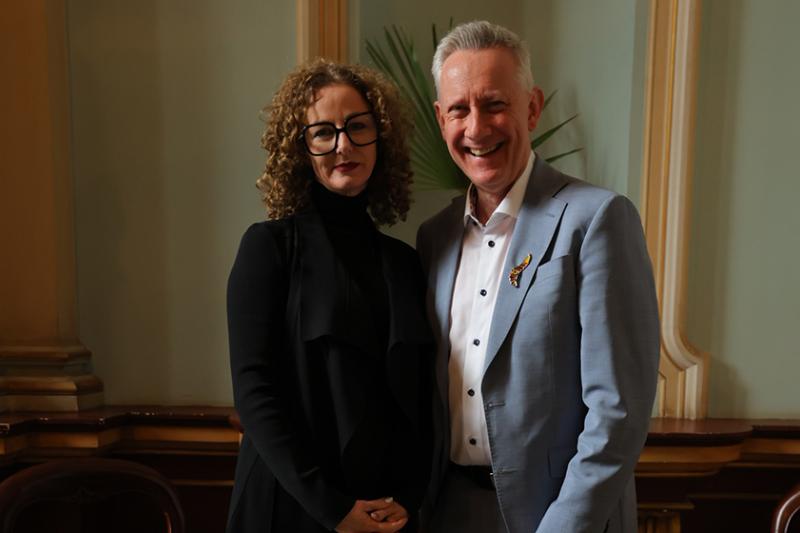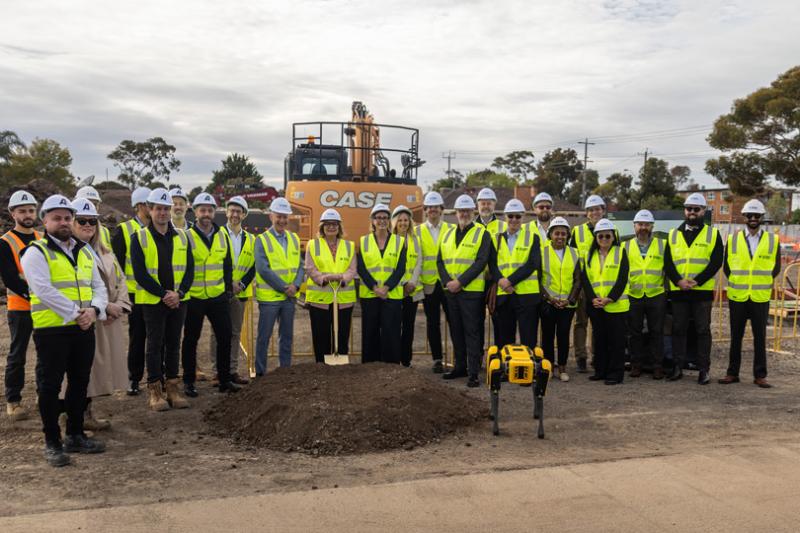Making concrete an answer to fast fashion?

Victoria University (VU) researchers have taken a unique approach to upcycling polyester by successfully using pre-owned high visibility vests to make concrete for new footpaths.
Motivated by the 23kg of textile waste each Australian produces annually, lead researcher Associate Professor Malindu Sandanayake was determined to find a positive use for polyester.
“This is a fibre that will not break down in the natural environment, so we thought we could capitalise on the strength of it to replace other polluting materials that are traditionally in concrete such as cement,”
Associate Professor Sandanayake said.
End-of-life uniforms account for 11,000 tonnes of textile waste each year, of which 99 per cent ends up in landfill. These vests are only used on average for six months as the reflector strips fade after 25 washes, making them unsafe for use on construction sites.
Partnering with Melbourne social enterprise, Assembled Threads, the local manufacturer of recycled fibre hi-vis vests, Associate Professor Sandanayake and the team took almost six months and 15 versions to get the perfect mix of cardboard and textile. It was also important to get the correct composite balance within the concrete mix design replacing virgin cement.
In April, they did a trial pour at a site on the Eastern Freeway upgrade in collaboration with the Eastern Burke to Tram Alliance (ETBA). Testing at the trial has proven very successful.
“Initial testing shows this behaves in the same way as traditional concrete. In fact, trial testing achieved the desired compressive strength earlier than expected. It is as strong, almost more so, than a traditional cement composition. Prolonged monitoring of the test sites will be undertaken post completion of the project,”
he said.
The concrete also successfully passed large-scale fire testing.
This mix is safe, durable and improves our climate footprint. It is also cost-effective due to the low-carbon conversion process of sustainable composite and the use of landfill waste material as a cement replacement material.
The project, supported by Sustainability Victoria through a $213,355 grant from the Circular Economy Markets Fund, has already had strong industry interest. The team sees commercial opportunities as well as other applications such as structural concrete and asphalt roads.
“We think this is just the beginning of a new approach to greener construction and look forward to finding more ways to challenge traditional building processes,”
Associate Professor Sandanayake said.
To speak to Associate Professor Sandanayake: Gemma Williams – Media and Communications Manager (Research and Impact) 0401 664 047
Contact us
Gemma Williams
Media and Communications Manager, Research and Impact
+61 401 664 047 [email protected]


